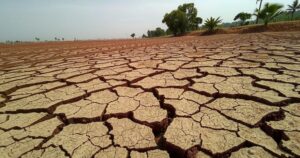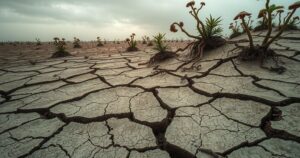World Weather Attribution Report Links 570K Deaths to Climate-Change Worsened Disasters

A report from World Weather Attribution finds that human-caused climate change has intensified extreme weather events, causing 570,000 deaths globally over the past two decades. The deadliest incidents include the 2011 Somalia drought, Cyclone Nargis in Myanmar, and a Russian heatwave. Researchers used climate models to assess the impact of anthropogenic climate change, urging immediate action against fossil fuel reliance to mitigate future suffering amidst projected further warming by 3°C by the century’s end.
A recent report published by World Weather Attribution has revealed that the ten deadliest weather events of the previous two decades were exacerbated by climate change resulting from human activities. The analysis indicates that these disasters, including hurricanes, heatwaves, droughts, and floods, have collectively led to around 570,000 fatalities worldwide. Among the events investigated were a devastating drought in Somalia in 2011, which accounted for over 250,000 deaths, and Tropical Cyclone Nargis in Myanmar in 2008, which caused nearly 140,000 deaths. Notably, a severe heatwave in Russia in 2010 resulted in more than 55,000 deaths. These three weather phenomena represent a significant portion of the deaths recorded in the International Disaster Database since 2004. Researchers utilized advanced computer models, which have been developed over the past two decades, to assess the extent to which climate change has increased the likelihood and intensity of these severe disaster events. As noted by Dr. Friederike Otto, co-founder and lead of World Weather Attribution at the Center for Environmental Policy at Imperial College London, the reality of climate change demands urgent attention: “Climate change isn’t a distant threat. It worsened extreme weather events that left more than 570,000 people dead.” Furthermore, Dr. Otto cautioned that continued reliance on fossil fuels will perpetuate the cycle of suffering caused by global warming. In their study, the researchers compared present-day atmospheric conditions, reflecting 1.2 degrees Celsius of global warming, against models that simulate a world unaffected by industrialization. This methodological framework provided a stark contrast between modern natural disasters and scenarios absent of human-induced climate influences. This report comes at a critical time as the United Nations has indicated that the planet is projected to experience up to 3 degrees Celsius of warming by the conclusion of the 21st century. Roop Singh from the Red Cross Red Crescent Climate Centre highlighted the dire implications of this trajectory: “The massive death tolls we keep seeing in extreme weather shows we are not well prepared for 1.3°C of warming, let alone 1.5°C or 2°C.”
The alarming analysis by World Weather Attribution emphasizes the direct correlation between climate change and increased mortality rates from extreme weather events. As the planet continues to warm due to industrial emissions, the intensity and frequency of these natural disasters are expected to rise, leading to greater human suffering and loss of life. The research calls attention to the global responsibility of leaders and policymakers to mitigate the impacts of climate change by transitioning towards more sustainable energy sources and reducing reliance on fossil fuels. The findings serve as both a warning and a call to action to prepare for the severe challenges posed by climate change.
In summary, the World Weather Attribution report underscores the critical impact of climate change on extreme weather, which has contributed to the deaths of approximately 570,000 individuals in the past two decades. The study highlights the need for urgent action to address the factors leading to climate change, particularly the burning of fossil fuels. As we head towards potentially greater levels of global warming, preparation and adaptive measures will be vital to prevent further loss of life.
Original Source: www.theinertia.com






